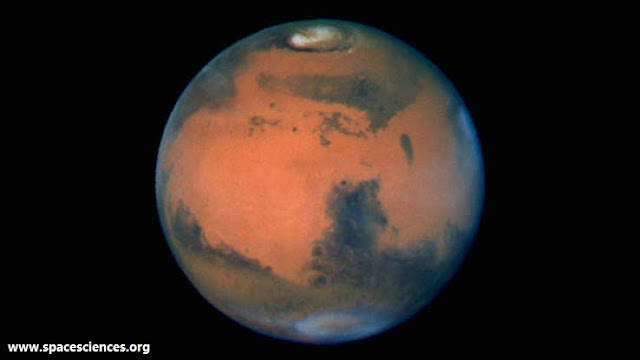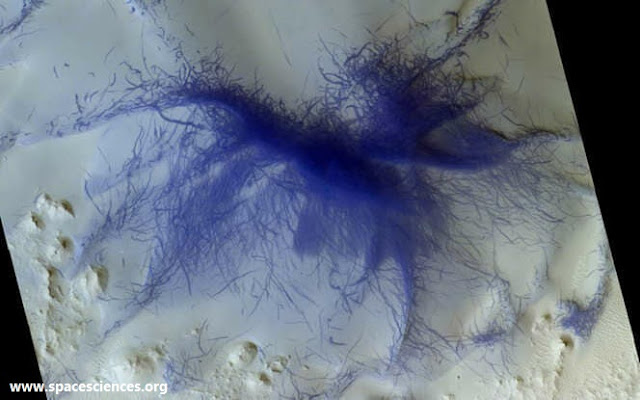From Illusions to Reality: Uncovering the Lies Behind Mars Myths and Conspiracies
This planet has fooled Earthlings many times with its strange rocky surface. Humans have been interested in Mars for centuries, perhaps because it is the closest habitable planet in the solar system other than Earth, or perhaps because it is close enough to be well-observed. But this proximity has also given rise to many illusions, rumors and conspiracies, and many people have claimed to see strange things on the surface of Mars.
After all, this planet has fooled Earthlings many times with its strange rocky surface. People have at various times claimed to find everything from canals and eerie human faces to extraterrestrial bases on the Red Planet's surface. In this vast universe, are we humans only eager to connect with our neighbors on this planet?
Given the long history of rumors and optical illusions associated with Mars, it certainly seems so.
1. Land and Sea:
In 1784, Sir William Herschel, a famous British astronomer, wrote that the dark areas on Mars were oceans and the light areas were land.
They hypothesized that Mars is inhabited by intelligent beings who, according to NASA, "probably enjoy this situation as much as we do."
Herschel's theory prevailed for a century, with other astronomers claiming that vegetation could also be seen in light-colored regions.
https://en.wikipedia.org/wiki/Water_on_Mars
2. Drains and Canals:
When Mars approached Earth, the Italian astronomer Giovanni Schiaparelli observed some grooves on the red planet's surface with his telescope. The Italian word they used for these canals was "canali," which translates to "canals" in English, leading many in the English-speaking world to conclude that there were intelligent beings on Mars. Creatures were inhabited that created a system of waterways.
This fallacy was popularized by an astronomer named Percival Lowell, who in 1895 presented drawings of the canals in a book entitled "Mars" and in 1908 discussed his complete theory in another book, "Mars as Life." .
This theory was disproved in the early 20th century, when it was declared that the "rivers" were merely optical illusions. Seen through poor-quality telescopes, Martian point-like features, such as mountains and craters, appear to line up directly with each other.
https://tharsis.gsfc.nasa.gov/canals.html
3. Face of human:
It all started in 1976, when NASA released a fascinating image of a mountain on Mars, captured by the "Viking 1" spacecraft. Eyes and nostrils could be clearly seen in the picture. Although it was a picture of a mountain, more than 30 years later, the "Face on Mars" still inspires myth and conspiracy theorists. Many believe it is an artificial structure built by an ancient Martian civilization. The shadow of the mountain really makes it look like a face when viewed from above.
However, images taken by the Mars Express orbiter and other spacecraft show that from other angles the mountain is clearly distinct, and does not look like a face at all. Pareidolia is the scientific term for seeing faces (or other significant objects) in different objects.
https://science.nasa.gov/science-news/science-at-nasa/2001/ast24may_1
4. Trees of Mars:
In 2001, seven years before his death, famed science fiction author Arthur C. Clarke, co-creator of "2001: A Space Odyssey," announced that he had discovered new images of Mars taken by the then-orbiting Mars Global Surveyor. In the pictures, you can see clumps of plants including trees.
"Take a good look at these new images of Mars, a lot is changing with the seasons." Clark said, speaking by phone during the Werner von Braun Memorial Lecture Series at the Smithsonian's National Air and Space Museum. "moving, which could possibly be vegetation." and "Where there's vegetation, you can bet we're going to find some Martians," he added.
The branches that Clark saw on the Martian surface are what Martian geologists call "spiders." These lines look like branches, and change with the seasons.They are formed by the melting of icy rocks by carbon dioxide, which flows along these paths when the carbon dioxide turns into ice sublimation gas. which look like branches.
https://www.space.com/7775-strange-mars-photo-includes-tantalizing-tree-illusion.html
5. Man on Mars:
In 2007, the Mars rover "Spirit" took a closer look at the Red Planet, and spotted an image of a man dressed in human clothing kneeling in worship. Spirit obtained a beautiful view of the plateau called "Home Plate", which lies within Goseo Crater in the interior basin of the Columbia Hills range. Of course, the "man" in the picture is just a rock, humanized in our minds by pareidolia.
https://www.space.com/humans-to-mars-summit-2023-explainer
6. Hairy blue Spider:
Images taken by the European Space Agency (ESA) in 2019 show what appears to be a giant hairy spider sitting with its legs stretched out on a Martian mountain. But these dotted "legs" are actually the tracks of hundreds of tiny tornadoes, or dust storms. It is not clear why the mountain is a hotspot for such storms, but ESA scientists say the way the air mass circulates around the region may be conducive to the formation of dust tornadoes.
https://www.space.com/mars-hairy-blue-spider.html
7. Strange Green Rock:
Mars, as we all know is a red planet. So why is this strange rock discovered by the Perseverance rover green? A tweet posted by the rover's public relations team on March 31 wondered, “Did this piece of Mars fall into this area from deep space? Is it Shahab-e-Saqib or something else?” The rock is about 6 inches (15 cm) long and lies in Mars' Jezero Crater near the rover's landing site. The rover vaporized a portion of the rock with a laser so that the rover's cameras and spectrometers could analyze the vapor cloud and reveal its chemical composition. Perhaps the answer to this mystery will be found soon.
https://www.space.com/perseverance-rover-spots-strange-rock-on-mars










0 Comments
Please don't enter any spam link in the comment box.